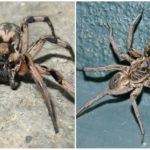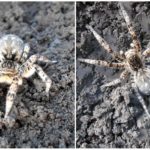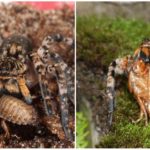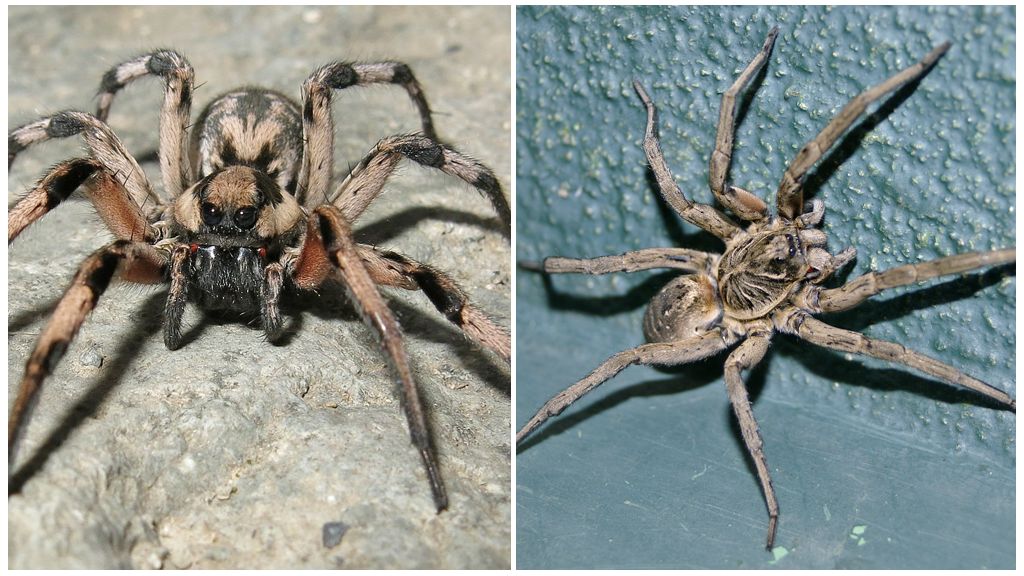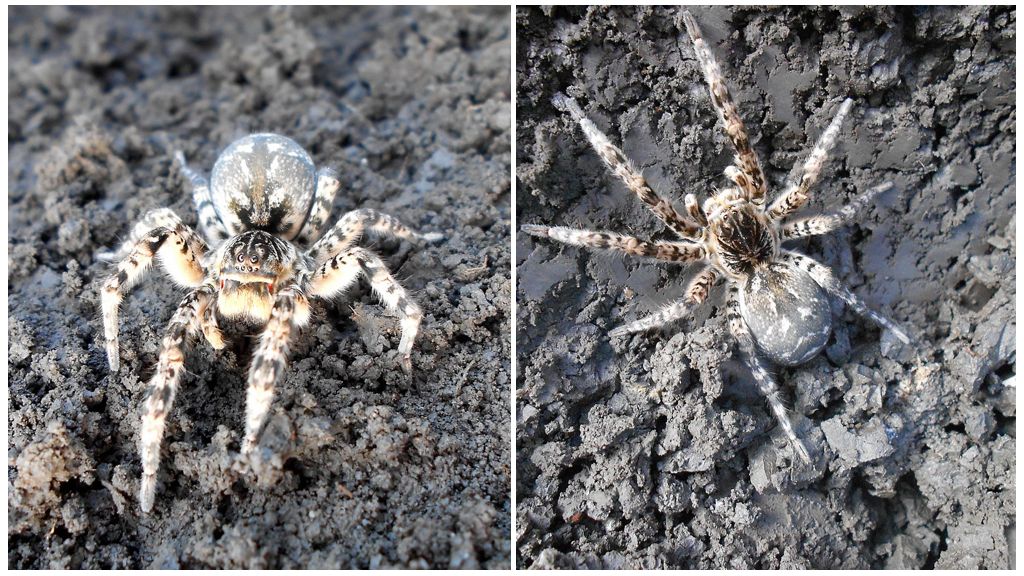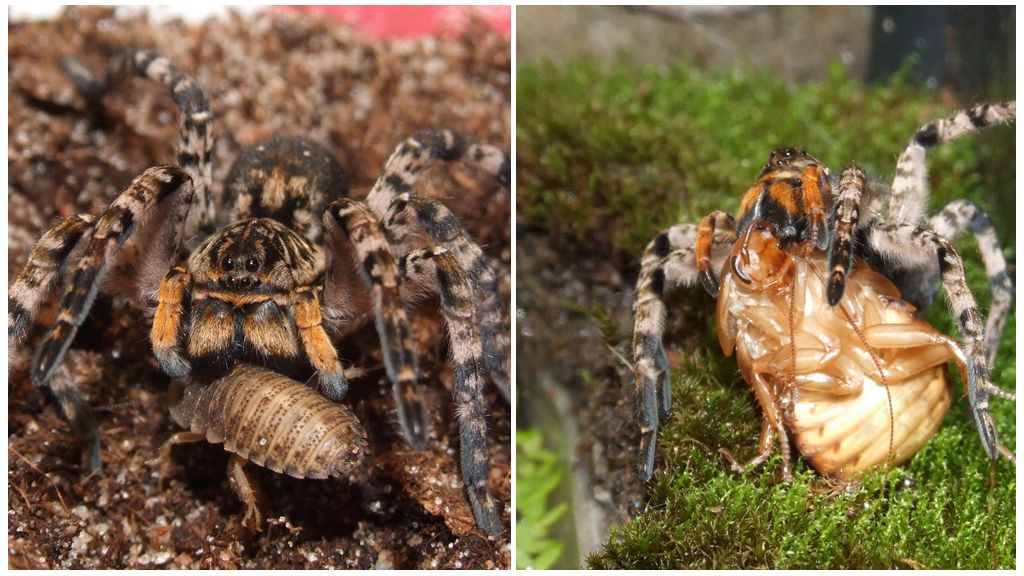What a tarantula spider looks like
Content
- Tarantula spider
- South Russian tarantula
- South Russian tarantula
With the words: the spider tarantula, the inhabitant of the English-speaking space usually presents a huge tarantula. Inhabitants of the southern regions of the former USSR immediately recall large gray spiders of the genus Lycosa, digging holes in the dry steppes of southern Ukraine, the Crimea and the Krasnodar Territory. Now the same associations will arise among the citizens of Belarus and residents of more northern regions of the Russian Federation. Because of global warming or for other reasons, but the population of the southern Russian tarantula in Russia has significantly expanded its habitat.
Appearance
For a non-specialist in photos and descriptions, it is difficult to determine which species this individual belongs to. For a specialist in the absence of a known size on a photo of a subject (a matchbox, for example) and an inconvenient perspective, determining the type is also not an easy task. All wolf spiders are similar to each other and differ in size and habitat. The most famous are the South Russian and Apulian tarantula.
It is easiest for a non-specialist to distinguish adult individuals in size: the body length of South Russian is 2.5–3 cm, and that of the Apulian is 7 cm.
On a note!
Among southern Russian there are individuals significantly larger than the indicated sizes.
Color tarantulas reddish-gray. The body is covered with thick bristles. There are slight differences in color, thanks to which two species can be recognized at a certain angle in the photo of a tarantula spider. In the South Russian “skullcap” on the head - a small dark speck. But the spider must be photographed exactly from above so that you can see this "cap".
On a note!
The royal baboon spider is not a tarantula and belongs to Pelinobius. This is a tarantula. Not the largest in his group, but the champion in size in Africa.Since this tarantula looks very similar to real tarantulas and differs only in brown color, it is often confused with representatives of the genus Lycosa. The baboon is even inferior to the Apulian tarantula in body length, therefore, it is also impossible to determine the size of a spider as a tarantula.
Confusion is added by the fact that in English tarantulas are called all large, non-weaving spider webs.
Structure
Externally, tarantulas are not fundamentally different from other spiders. But their internal structure is more primitive than that of more “higher” species.
The head of the tarantula inside the "empty", all internal organs are located in the abdomen. On the front of the cephalothorax there are 8 eyes. The distribution of the organs of vision is uneven:
- bottom row 4 small eyes;
- medium - 2 large;
- top - 2 small.
The latter are located on the sides of the cephalothorax, allowing representatives of Lycosa to see around 360 °. Tarantula vision is very well developed, as this spider hunts at night.
There are 5 pairs of limbs on the cephalothorax. The first pair of limbs transformed into powerful chelicerae, with which the tarantula bites through the shell of prey.The second pair - pedipalps, helps to seize and hold prey. In the male, it is also a reproductive organ, due to which its pedipalps are more developed than in the female. The remaining 3 pairs are for movement.
On these three pairs there are thin sensory hairs that act as tactile and auditory organs. Due to the hairs, the spider hears approaching danger or prey. This is where the similarity between different types of tarantulas of the genus Lycosa ends. Due to the different habitat and climate conditions, the lifestyles and breeding dates of these spiders do not match.
Interesting!
In the terrariums of newcomers, you can most often find the South Russian tarantula, as the most unpretentious and cheap view from all Lycosa. But even taking into account the fact that the maximum price of a tarantula of this species is only $ 28, this will result in a substantial amount if the spiders die quickly. Even with the purchase of young tarantulas at the age of 3-4 months. These spiders cost only $ 122.
South Russian tarantula
The Latin name of the species is Lycosa singoriensis. The generic name of the form "Mizgir." There is also the name "earth spider", which Lycosa singoriensis received for its lifestyle. Prefers to live in a dry climate.
Habitat areas:
- deserts;
- semi-desert;
- steppes;
- forest-steppe (less often).
It does not occur near large bodies of water, as it does not like wet soil.
Life terms
Lycosa longevity varies greatly and depends on two factors:
- line frequency: the more often the spider sheds, the less it lives;
- the possibility of falling into a seasonal hibernation.
In nature, Lycosa singoriensis lives for about 2 years. In captivity, he does not have the opportunity to hibernate and stay for a while in development. Because of this, the life expectancy of arthropods is reduced to 1 year. Also shortens the life of a spider too full life. The more an arthropod eats, the faster it grows and is forced to molt. Molding takes too much vitality. To avoid very frequent changes of the skin can be, if you keep the animal half-starved.
On a note!
It is necessary to feed the spider 1 time in 1.5-2 months.
Lifestyle
Since Lycosa are nocturnal animals, the study of their habits is difficult. Lycosa singoriensis dig vertically positioned minks and weave them around the web, pursuing 2 goals:
- protection of walls from fall;
- the creation of an alarm system.
Thanks to the web on the walls of the hole and the network that is spread out around the hole, the South Russian tarantula hears in advance the approach of both danger and prey.
In winter, before hibernation, the South Russian tarantula deepens the burrow and closes the entrance to it. May not hibernate if in a warm room.
Nutrition
Lycosa singoriensis hunts, jumping from a mink on the insects running past. The main mass of what this spider eats is made by small insects. Including agricultural pests. But the South Russian tarantula is not averse to snack and smaller relatives.
On a note!
By attacking prey or protecting a hole, Lycosa singoriensis is capable of jumping vertically upwards by 10-15 cm.
The chitin shell of caught prey tarantula pierces with chelicerae and injects poison, dissolving the insides of the victim. After 1-2 hours, the spider sucks out its lunch.
Virulence
Powerful cheaters tarantulas look frightening because of the fact that the spider needs to pierce their hard shells of beetles. The poison is designed for small insects. Therefore, Lycosa singoriensis easily pierces human skin, but cannot cause serious harm. The effects of the attack on the South Russian tarantula are similar to the bite of a bee or wasp:
- sharp pain at the moment of bite;
- local swelling;
- nagging pain at the site of the bite.
Sometimes the skin turns yellow.Yellowness lasts about 2 months.
Breeding
Lycosa singoriensis marriage games begin in late summer. Having found the female, the male actively moves his forepaws and vibrates the abdomen. The female, ready for mating, repeats the movements of the male, proposing to proceed to active actions.
On a note
After mating, a hungry female can have a snack with a partner, so the male is quickly removed.
The fertilized female for the winter hibernates, and in spring creeps upward and exposes the belly to the sun. Warming up contributes to the rapid maturation of eggs. The female lays eggs and weaves a cocoon around them, which then attaches to the spider glands. After hatching, she kills a cocoon.
On a note!
The female never leaves the cocoon unattended, and if threatened, the offspring are ready to fight for him to death.
Out of will, the spiders climb onto the mother's abdomen and are placed there in several layers. And the female becomes like a blackberry spider. In the close-up photo you can see which “pattern” is formed by the spiders sitting on the mother. The total number of calves can be up to 100 pcs.

